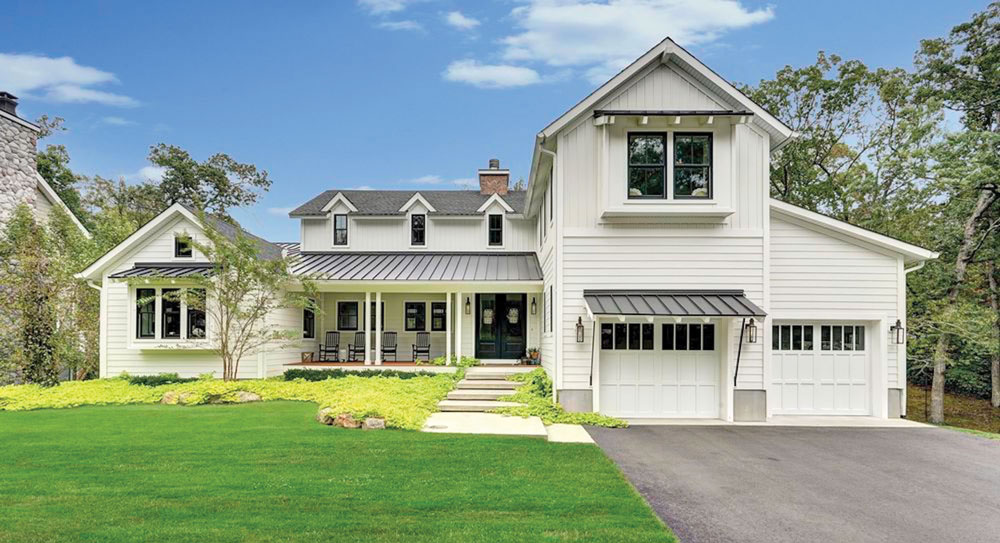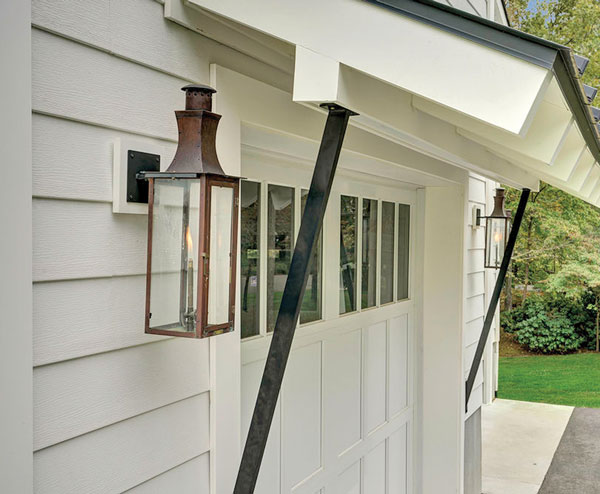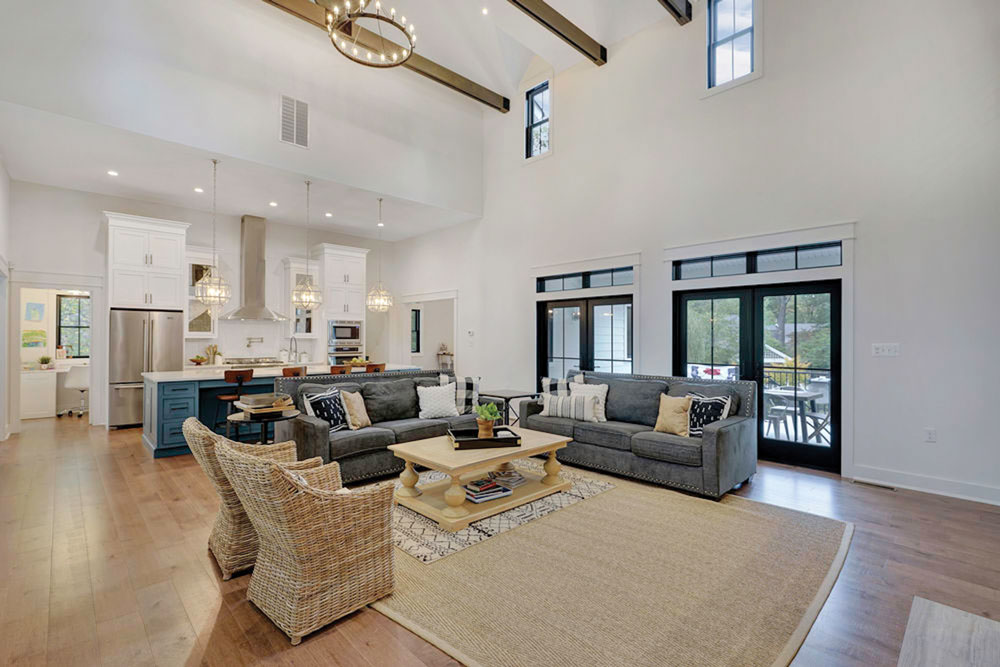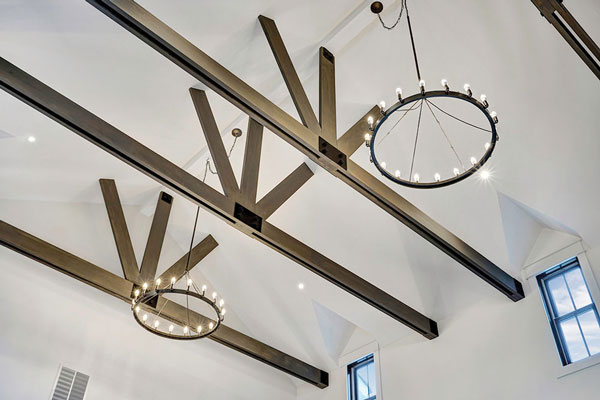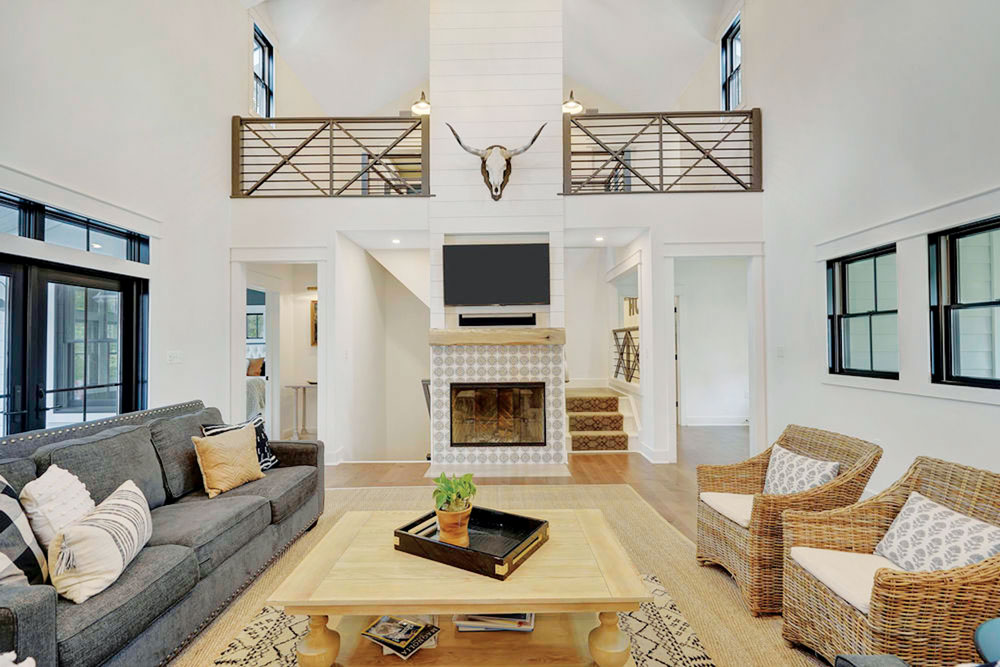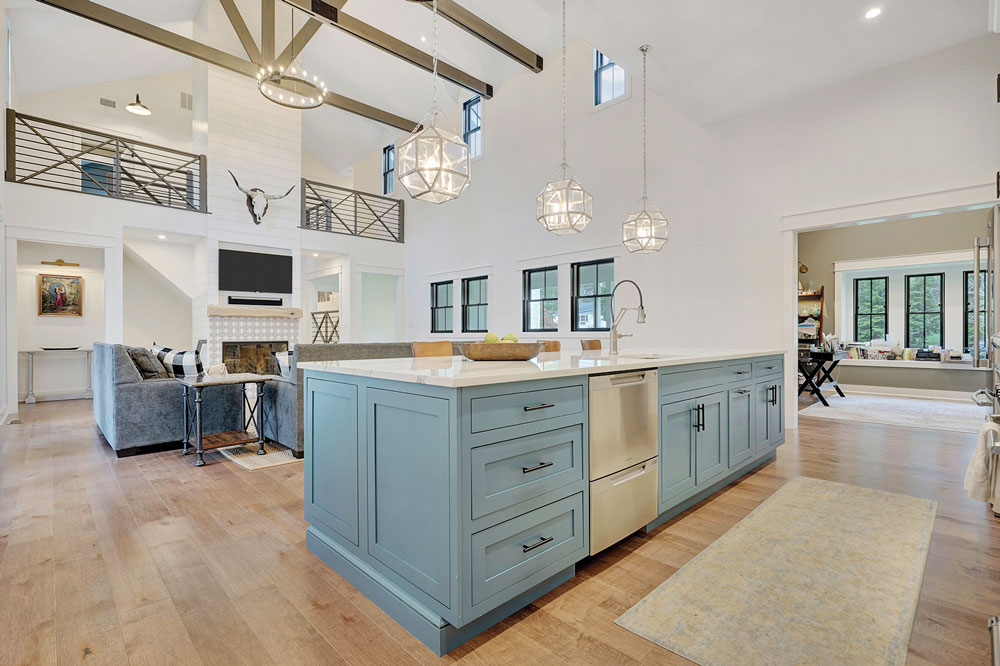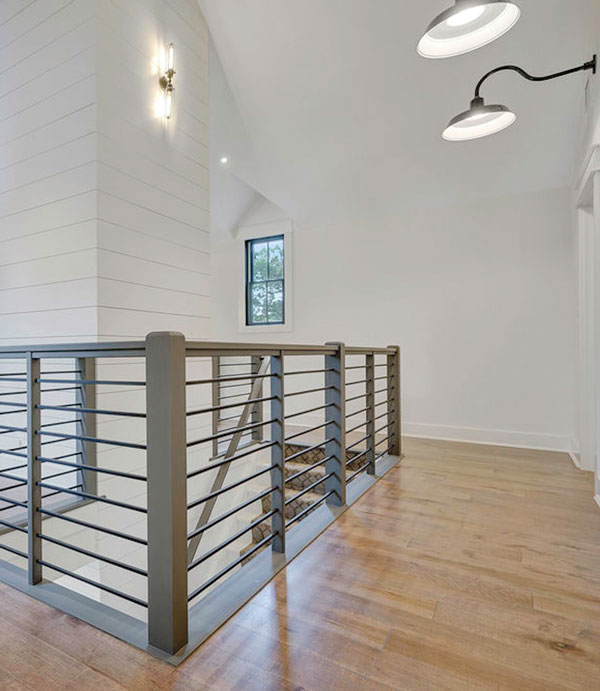Pure and Simple
Writer Marirose Krall | Photographer Motion City Media | Architect MODE Architects | Builder Lotano Development IncA Toms River, NJ, home features timeless style
Owners Jason Hanrahan (left); Daniel Condatore, RA
MODE Architects
Asbury Park | 732-800-1958 | Mode-Arch.com
When Matthew Lotano, of Lotano Development Inc. in Toms River, New Jersey, and his wife, Melissa, wanted a house built from the ground up, they knew exactly who to trust with the design. Jason Hanrahan, of MODE Architects in Asbury Park, New Jersey, is a long- time friend of the Lotanos. Hanrahan, working along with his partner at the firm, Daniel Condatore, created a custom home for the couple and their children. When it was time to furnish the interiors, Hanrahan worked in collaboration with Melissa, a former interior design professional.
Design NJ: What is the architectural style of this residence? What are the hallmarks of that style?
Jason Hanrahan: This home is basically a modern farmhouse. I think the successful modern farmhouse has a simplicity to it. It’s white with black accents. The forms of the building are not overdone. The detailing should be straightforward and authentic.
DNJ: Why has this style seen a rise in popularity in recent years?
JH: It’s a timeless look. Very often, we see a material that is “the look” of the time, but it becomes outdated or tired after awhile. With the modern farmhouse, you get a complete look that transcends materiality and creates a cohesive statement. At its most basic, it is white and black with very clean lines, which will always be well respected. Many times, people tend to get lost when a design has too much going on; this style has a well-thought-out simplicity that is appealing.
DNJ: What type of detailing did you add to the façade of the home?
JH: The modern farmhouse is minimal; it’s the details that are really going to make it pop and create interest in the façade. All the siding is white; but we used the same siding material both horizontally and vertically, rotating it to highlight different parts of the house. To accent the white exterior, we used black trim around the windows. Even the lights at the entry door are black. We used rafter tails beneath the awnings to give the look of a thin roof of metal floating over the exposed structure.
“It’s a gratifying process to see something that was once a few sketches come to life into a fully articulated, well-thought-out building.”
DNJ: What prompted the decision to add the overhangs above the garage and the second-story window?
JH: A two-car garage was a necessary program requirement. We wanted to break it up so it wouldn’t look like a big, overpowering presence. We didn’t have room to hide it on the side, so we created volume at the front of the house with the bump out. We emphasized the bumped-out portion with a standing-seam metal roof overhang. By setting one portion of the garage behind the other and only creating a second floor over half of it, we minimized the garage visually while blending it into the architecture and style of the house.
DNJ: What was the design plan for the interiors?
JH: The concept for the floor plan started with the fireplace in the great room. The circulation of the whole house is centered around that fireplace. The stairs wrap around it and it’s flanked by the two balconies, which are almost like Juliette balconies. It’s a cool feature.
DNJ: The interior windows have been left bare. Why?
JH: We like the simplicity of the look without window treatments. There are no nearby neighbors, so privacy is not an issue. The property is scenic and parklike, so there’s always a nice view. And in the evening, from the backyard, the house glows beautifully. We also painted the interior window trim black, so that the design is cohesive. We brought an element of the exterior and brought it inside.
DNJ: The vaulted ceiling in the great room is an architectural focal point. How high is the ceiling and are the beams a structural component?
JH: The ceiling height is approximately 22 feet. The beams are not structural as a matter of practicality. When we design houses, we aren’t sure at what point in construction the beams will go up; so we specify trusses that don’t hold up the ceiling because that might delay building. They’re well built, but they’re not holding up the house.
DNJ: The ceiling in the kitchen, at 11’6″, is lower than that in the great room. Why is that?
JH: We wanted the kitchen to be a place where you could sit around the island and it still would feel intimate even though you’re in this large space. If it were too large, it would feel like sitting in a void. We didn’t want to overpower the family time in this cathedral.
DNJ: The railings, which you custom designed, are another striking component in this house. What was your thought process?
JH: We wanted to create a detail that would define the interior of the house. The “X” bracing and the horizontal tubing on the railing are a nice reflection of modern farmhouse design. It’s a little different than the typical railing you see in a residential space. It’s wood with black accents; we brought in the wood to warm up the interior a little bit and to complement the ceiling beams.
DNJ: The homeowner has professional interior design experience. What was involved in your collaboration with her?
JH: In a former life, Melissa was an interior designer. (She’s now in real estate.) She has a great eye—a very particular eye. We’ve known each other all our lives and have often discussed interior design. I was able to complement her direction, especially since I’ve known her for so long. It was an enjoyable, gratifying process, as was collaborating with the team at MODE and seeing something that was once a few sketches come to life into a fully articulated, well-thought-out building.

